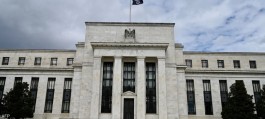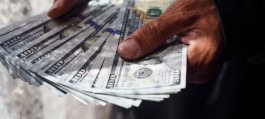Oil prices ended trading on Friday down 1 percent, and recorded a larger decline over the week as markets continued to worry about weak Chinese demand for crude despite OPEC+ extending production cuts.
Brent crude futures fell 88 cents, or 1.1 percent, to settle at $82.08 a barrel.
U.S. West Texas Intermediate (WTI) crude futures fell 92 cents, or 1.2 percent, to $78.01 a barrel.
Both benchmarks posted weekly declines, with Brent down 1.8 percent and WTI down 2.5 percent.
“While supply has remained on the tighter side due to OPEC production cuts and Russian sanctions slowing exports, demand from China appears to be slowing and the US driving season has yet to kick in,” said Dennis Kessler, deputy general manager of trading at BOK Financial.
China earlier this week set its 2024 economic growth target at around 5 percent, which many analysts say is a tough target to hit unless more stimulus measures are taken.
Data showed on Thursday that China's crude oil imports rose in the first two months of the year compared to the same period in 2023, but were also weaker than previous months, indicating a continued trend of declining purchases by the world's largest crude importer.
On the supply side, OPEC+ members agreed on Sunday to extend a voluntary oil production cut of 2.2 million barrels per day into the second quarter of the year, giving the market further support amid concerns about global growth and rising output from outside the group.
However, Rystad Energy data showed that crude oil production in OPEC+ countries rose by 212,000 barrels per day in February compared to January.
Meanwhile, energy services firm Baker Hughes Inc said energy companies cut the number of oil rigs in the United States, an indicator of future production, by two to 504 this week, the lowest since Feb. 23.
Oil markets have focused in the past two sessions on signals about the timing of potential interest rate cuts in the United States and the European Union. Lower interest rates could boost demand for oil by boosting economic growth.
Data from the U.S. Department of Labor's Bureau of Labor Statistics showed that U.S. nonfarm payrolls increased by 275,000 in February, beating expectations for an increase of 200,000 jobs.
But the unemployment rate also rose and wage growth slowed, suggesting the U.S. economy may be slowing, keeping expectations alive that the Federal Reserve will cut interest rates in June.
Federal Reserve Chairman Jerome Powell said on Thursday that the bank is not far from building enough confidence that inflation is falling enough to start cutting interest rates.
The ECB will likely start cutting interest rates sometime between April and June, Francois Villeroy de Gaillot, the head of the French central bank and a policymaker at the European Central Bank, said on Friday.



































